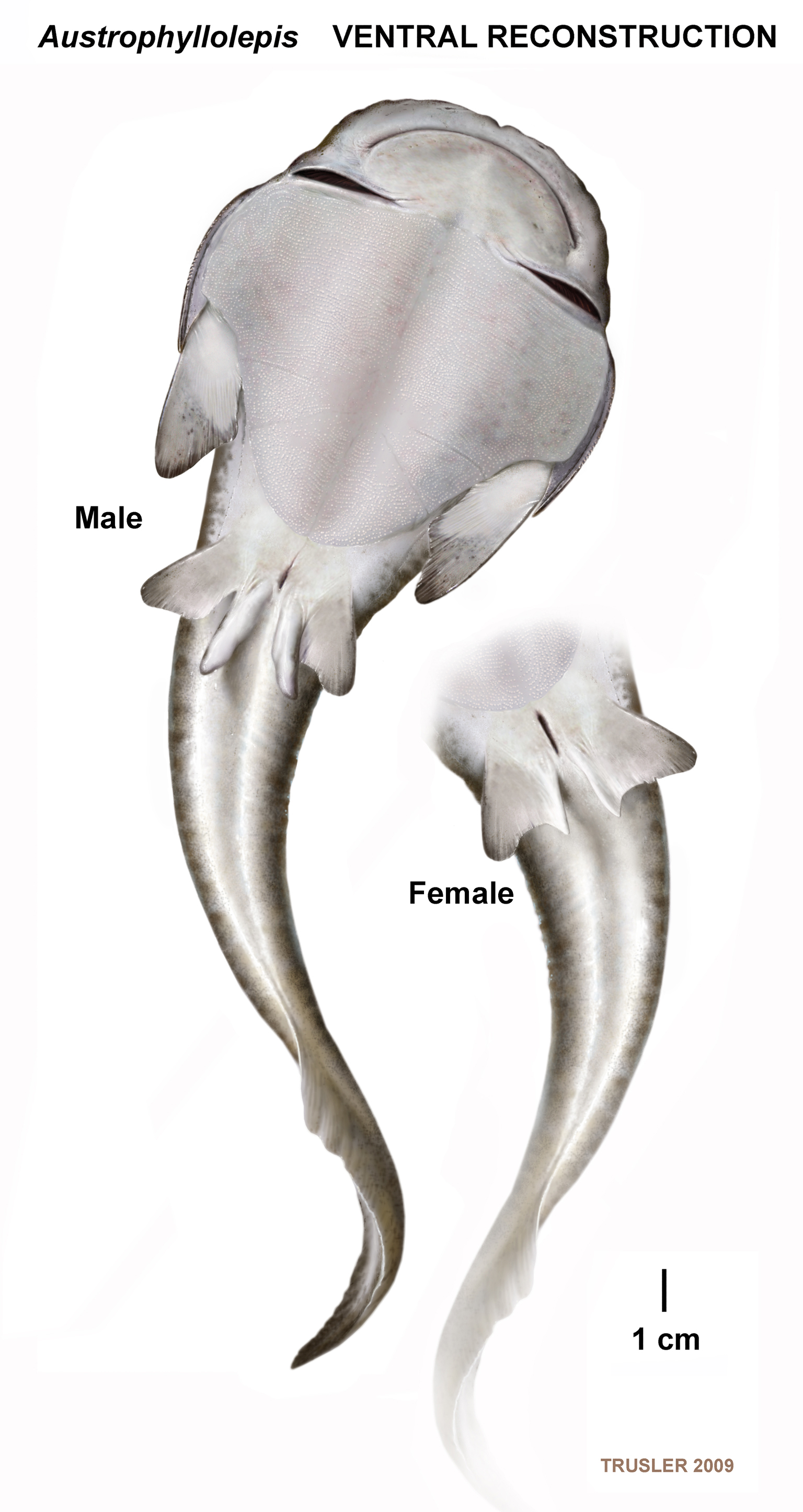Giving birth to live young is thought to mainly occur in mammals and sharks, but a new study suggests that it was once a common mechanism for reproduction. A large group of ancient fish carried its embryos internally and bore live offspring, says a study published in Nature this week.
The findings paint "a very complex picture of reproductive physiology in the deepest parts of the jawed vertebrate tree," said Martin Brazeau, a paleontologist at the Humboldt Museum in Berlin. In 2008, Long's group identified embryos in a pair of fish fossils from a deposit in the Gogo formation in Kimberley, Australia. Those fish were part of a group called ptyctodontids, which made up only a tiny portion of the Placodermi class. The discovery pushed back the origin of internal fertilization by 200 million years. The findings prompted the group to look for signs of internal fertilization in other Placoderm fossils from hundreds of samples in collections around the world. They reexamined Gogo fossils from the Arthrodira group. In two of the fossils' body cavities were smaller fish, originally presumed to be a well-preserved meal. But based on the position of the tiny fish and the similarity to the ptyctondontid finds, the group concluded that the tiny arthrodire fish were actually embryos. "Finding that first embryo was the key, the Rosetta stone for knowing what to look for," Long said. Next, the group wanted to understand how exactly the ancient fish mated. They inspected the pelvic fins of other specimens of arthrodires and found evidence of "extra large bony elements coming off the fin" in about two dozen different specimens, Long said. These protrusions were similar to the claspers that males sharks insert into females to fertilize eggs, he explained. The structures give insight into Placoderms' reproductive behaviors, Long said. In sharks, the biggest group of fish that use internal fertilization, males have "to bite the pectoral fin and hold onto the pectoral fin while they mate," said Long. The new study suggests that the ancient fish may have similar mating habits to sharks, said Brazeau. |
WE’VE MOVED!
-
Dear Friends, We’ve moved (well, mostly) to our new domain
www.faithpromotingrumor.com. All posts and comments made before March 6,
2009 have be transferre...
16 years ago









No comments:
Post a Comment